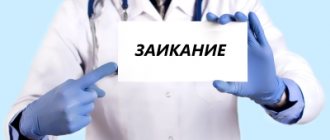The development of an epileptic lesion in the temporal lobe of the brain leads to the progression of a certain form of epilepsy. In medicine it is known as temporal lobe and is divided into several types. This pathology is the most common. There are about 35% of patients suffering from this disease, and in cases with symptomatic partial epilepsies this figure reaches 60%. But even if the clinical picture of the disease has features similar to temporal lobe epilepsy, this does not necessarily indicate the presence of a lesion in this area. It may radiate from another area of the brain.
What is temporal lobe epilepsy
Many processes are concentrated in the temporal lobes. The nerve cells of these brain areas ensure normal memory functioning and are responsible for the perception of sound. The temporal lobe is also involved in the emotional process. If it is affected by an epileptic focus, a person may experience recurring feelings of anxiety, admiration, and anger. The perception of the surrounding conditions is also distorted. There is a feeling that the new place in which he finds himself is familiar to him (the so-called “déjà vu phenomenon”). Often this condition is accompanied by sound hallucinations.
Temporal lobe epilepsy is characterized by unprovoked seizures of varying severity. These are not single, but periodically recurring convulsive seizures, localized in the lateral temporal or medial lobe of the brain. Refers to a number of symptomatic epileptic pathologies. Depending on the type of attack, the excitation process can be localized and also spread to both temporal zones.
Depending on the location of the epileptic lesion within the temporal region, the following forms of this disease are distinguished:
- Amygdala epilepsy. Develops regardless of a person’s age. It is observed mainly in individuals of infant or school age. This temporal lobe epilepsy is characterized by severe psychomotor manifestations, accompanied by a disorder of consciousness. The patient's motor activity is preserved, but automated.
- Hippocampal. Accounts for about 65% of all cases of symptomatic temporal lobe epilepsy. The first manifestation of the disease occurs when the patient is at school age. Most patients experience atypical febrile seizures before the first attack.
- Lateral. Of all the forms of temporal lobe epilepsy, this is the most rare. The patient's age, as a rule, does not play a significant role in the development of the disease. This form is characterized by focal sensory attacks with pronounced manifestations: visual and sound distortions, dizziness in combination with vegetative symptoms, loss of consciousness.
- Opercular (insular). A form of frontotemporal epilepsy in which the lesion develops in the opercular zone of the brain. The clinical picture of convulsive attacks is represented by profuse salivation, clonic convulsions in the muscles of the face, neck and larynx, a tingling sensation in the throat and half of the face.
Since this form of epilepsy has a focal onset (in the temporal lobe), it belongs to a number of focal pathologies. At the moment, this concept applies to the nature of the seizures, and not to the form of the disease itself. The most relevant is the division of temporal lobe epilepsy into:
- Symptomatic. The most common and frequently occurring form of symptomatic disease is medial, or mesial, temporal sclerosis. Also in medicine there is such a concept as structural temporal lobe epilepsy, which refers to the morphological characteristics of the pathological condition.
- Idiopathic. With this form, there are no structural changes in the brain tissue. Develops under the influence of genetic factors.
- Cryptogenic. One of the most dangerous forms of temporal lobe epilepsy. The disease tends to progress. It is characterized by complex attacks accompanied by pain in the heart and abdomen. People with cryptogenic temporal lobe epilepsy may experience panic and olfactory and visual disturbances. Due to fear, patients may take unreasonable actions.
It should be noted that one or another form of temporal lobe epilepsy in its pure form is rare.
Expert opinion
Author: Georgy Romanovich Popov
Neurologist, Candidate of Medical Sciences
Doctors attribute the difficulty of diagnosing epilepsy to the variety of clinical forms of this disease. At present, the exact causes of the development of convulsive seizures have not been established. Temporal lobe epilepsy is often symptomatic. According to statistics, pathology can occur in people of any age; the earliest onset of seizures was recorded at 6 months. Temporal lobe epilepsy requires timely diagnosis and correct treatment.
Doctors at the Yusupov Hospital diagnose this form of the disease using modern medical equipment. European MRI, CT and EEG installations allow you to quickly determine the localization of the pathological focus. Experienced neurologists and epileptologists develop an individual treatment program based on diagnostic results. New drugs are prescribed for therapy that meet international standards for the treatment of temporal lobe epilepsy. Surgical intervention is performed solely according to indications. It is possible to achieve stable remission in 60-70% of cases. Each patient at the Yusupov Hospital is provided with personal preventive recommendations to minimize the risk of relapse of temporal lobe epilepsy.
Treatment
Treatment for temporal lobe epilepsy is aimed at reducing the frequency of seizures and seizures. In addition, it is important to achieve a state of stable remission and adapt the patient to life in society.
Treatment of epilepsy involves a medication approach. The use of folk remedies as the only method of therapy is unacceptable. Only complex therapeutic effects are effective.
Drug therapy
At the first stage, epilepsy is treated with Carbamazepine. If it does not produce results, drugs related to valproate, hydantoins, and benzazepines are prescribed. In some cases, monotherapy does not bring results, then treatment is used using a combination of various drugs: Topamax, Finlepsin, Depakine - in certain combinations. When taking medications, you must read the instructions for contraindications and side effects. The main disadvantage of the drugs is their negative effect on the organs of the digestive tract, as well as a decrease in memory, performance, and motor activity. Important conditions for therapeutic measures for epilepsy are the systematic use of medications by the patient and monitoring by a doctor throughout life.
Surgical intervention
When therapeutic methods do not bring positive results, surgical treatment is performed. It is prescribed in cases where frequent seizures are observed and the focus of epileptic excitation is strictly defined. In the vast majority of cases, the operations are successful and relieve the patient from frequent seizures in the postoperative period of life. However, there are certain risks that the doctor must familiarize the patient with before surgery.
Causes of temporal lobe epilepsy
The occurrence of temporal lobe epilepsy can be triggered by a number of different factors. They can be divided into two groups:
- Perinatal. These include those that affect the fetus at the stage of its intrauterine development. These also include generic influence factors. The impetus for the development of temporal lobe epilepsy can be trauma received during childbirth, oxygen starvation of the fetus, various intrauterine infections such as measles, rubella, syphilis and others, as well as asphyxia of the baby at the time of birth.
- Postnatal. These developmental mechanisms imply the occurrence of epileptic activity due to severe traumatic brain injury and infections affecting the central nervous system. This group of factors also includes hemorrhagic and ischemic stroke. Also, the progression of the disease is facilitated by brain lesions such as large tumors, hematoma, cerebral aneurysm, sclerosis and abscess.
In more than half of cases, the disease develops due to medial temporal sclerosis. This disease can either cause epilepsy or be a consequence of prolonged convulsive seizures. Its essence lies in a destructive process in which neurons die, which leads to scarring of the deep part of the temporal zone. The clinical picture of the pathology is varied, but the most characteristic sign is febrile convulsions. In medicine, they are considered one of the most dangerous mechanisms for the development of temporal lobe epilepsy. Febrile seizures are tonic-clonic or tonic tremors in the limbs, occurring in the form of seizures at a body temperature of 37.8-38.5. Most often observed in children of various age groups.
There is also a direct connection between the severity of the disease and the lack of Reelin, a protein that regulates the positioning of neurons. It is convulsions with a long duration that provoke its loss.
Causes
Temporal lobe epilepsy occurs for many reasons, which are divided into perinatal, affecting the development of the fetus in the womb and delivery, as well as postnatal. About 36% of examples of the disease are caused by: perinatal damage to the central nervous system, hypoxia, trauma during childbirth, asphyxia, dysplasia.
Temporal lobe epilepsy under the influence of postnatal etiological disorders manifests itself after: skull trauma, infection, meningitis, encephalitis, stroke, tuberous sclerosis, neoplasms, hematoma inside the brain.
In half of the examples, temporal lobe epilepsy is diagnosed on the basis of medial sclerosis. Until today, it is impossible to provide accurate information regarding the cause-and-effect relationships of the development of temporal sclerosis. Especially with a long duration of attacks.
The first signs of temporal lobe epilepsy
Depending on the age at which temporal lobe epilepsy develops, its symptoms can be very diverse. Symptoms in adults differ from manifestations of the disease in children. In newborns, epileptic signs are difficult to distinguish from normal motor activity. As mentioned above, the disease is often preceded by atypical attacks of febrile seizures. As a rule, they begin in children between 6 months and 6 years. From the moment of the first seizure and for 2-5 years, the patient experiences spontaneous remission. Upon reaching 6 or 8 years of age, psychomotor seizures characteristic of temporal epilepsy occur.
Diagnostics
Diagnosing temporal lobe epilepsy can be challenging. In adults, detection of the disease usually occurs at the stage of the appearance of secondary generalized attacks. This is due to the fact that most patients do not notice simple and complex partial seizures or do not consider them a reason to seek medical help.
Temporal lobe epilepsy most cases occur in patients under 20 years of age. In approximately 30% of cases, it develops in children in the first three years of life.
In children, temporal lobe epilepsy is usually diagnosed in the early stages. Parents bring their child for consultation because they are concerned about the child's automatic movements, behavioral disturbances, or periodic blackouts.
MRI and PET scans help determine the cause of temporal lobe epilepsy
Neurological disorders in temporal lobe epilepsy are usually not observed, except in cases where the disease develops against the background of a hematoma, stroke or brain tumor.
Electroencephalography in temporal lobe epilepsy in most cases does not reveal any changes. Therefore, to diagnose the disease and detect the focus of epileptic activity, it is recommended to perform polysomnography with recording of an electroencephalogram during the patient’s sleep.
To determine the cause of temporal lobe epilepsy, MRI and PET scans are performed.
Symptoms of temporal lobe epilepsy
A characteristic property of the multiple clinical symptoms of temporal lobe epilepsy in adults is the polymorphism of the disease. The main manifestations of the disease include seizures. They come in different types, and each of them has its own characteristics. Patients with temporal lobe epilepsy may experience either one type of seizure or a combination of them. Epileptic seizures include:
- simple partial seizures (SP);
- complex partial seizures (SP);
- secondary generalized seizures.
Approximately 75% of patients experience a so-called aura before the onset of a seizure. This condition is represented by a combination of olfactory sensations, visual and auditory disturbances, as well as psycho-emotional feelings. Aura is also considered as an independent attack and serves as a sign of progressive temporal lobe epilepsy. The nature of the aura is of great importance in identifying a more precise location of epileptic pathology in the temporal lobe of the brain. The presence of an aura is a kind of warning sign - the person is fully aware of it and can take measures to minimize the attack and its consequences. These types of attacks can be divided into:
- Motor. The eyes and head of a patient with temporal lobe epilepsy spontaneously turn in the direction in which the lesion is located.
- Sensory. A symptom of such attacks is the sensation of unusual odors that no one except the person with epilepsy can smell. In addition, there is a change in the taste of food, or the patient complains of an unusual taste in the mouth. The patient also feels dizziness, which is often combined with auditory and visual hallucinations.
- Vegetative-visceral. In these cases, the patient with epilepsy feels squeezing and swelling in the chest. Attacks of suffocation are also observed; many patients cannot get rid of the feeling of a lump in the throat. Seizures are accompanied by pain in the abdomen and heart. Often there is a feeling as if everything around is an illusion, from which the patient is paralyzed by panic fear
- Simple epileptic seizures leading to mental disorders. They arise in the form of a distortion of the patient’s perception of reality and himself. They indicate a mediobasal epileptic-pathogenic process in the temporal lobe. Characterized by a feeling of déjà vu, as well as a feeling that the passage of time has slowed down or sped up. In addition, during a convulsive attack, a person cannot navigate in space and feels as if his body and thoughts do not belong to him.
- Adversive and speech (phonatory). The patient speaks and repeats individual words and phrases. Sometimes they make sense, and sometimes they sound incoherent and are very difficult to understand. Temporary loss of speech is also possible.
Depending on the symptoms, complex partial seizures in focal temporal lobe epilepsy are divided into 4 groups:
- They begin with an aura and are accompanied by a disorder of consciousness.
- The same signs as the first group, with the addition of automatisms.
- Seizures with loss of consciousness.
- There is no aura, but the patient loses consciousness, and automatisms are present.
Another characteristic symptom of temporal lobe epilepsy is a frozen face like a mask. This also indicates a complex partial seizure. The patient's eyes are wide open, his gaze is motionless and directed at one point.
As temporal lobe epilepsy progresses, its symptoms become more pronounced and severe. Secondary generalized attacks develop, accompanied by loss of consciousness and clonic-tonic convulsions in all muscle groups.
If temporal lobe epilepsy is not treated in time, the patient may experience mental, emotional, personal and intellectual-mnestic disorders. They appear as:
- slowness;
- slow thinking;
- forgetfulness;
- emotional instability;
- aggressiveness and conflict.
Patients begin to show a tendency to detail, become overly detailed, and cannot distinguish the important from the unimportant. At the same time, they experience difficulty in generalizing, since fixation on details prevents them from concentrating and distracts them from consistent presentation. Since intellectual abilities are reduced, the patient’s speech loses its meaning.
A variety of neuroendocrine diseases in adults with temporal lobe epilepsy also indicate progression of the disease. They may differ depending on gender. Women experience menstrual irregularities and decreased fertility. Polycystic ovary syndrome can also occur against the background of temporal lobe epilepsy. Men suffer from decreased libido and impaired ejaculation.
Clinical picture
Manifestations of the disease are very diverse. Patients are often worried about the feeling of an imminent onset of an attack in the form of changes in taste, sensitivity, hearing, and visual acuity (30-50%). Attacks of freezing without stopping the started activity, absent-minded gaze during an attack for several seconds, minutes (60-90%). Episodes of blackouts can be repeated up to several times a day. In 55% of cases, the phenomenon of déjà vu occurs. Periodic discomfort in the abdominal area and anxiety are observed in 45-60%. With a long course of the disease and the absence of adequate therapy, memory loss and character changes in the form of frequent mood swings and irritability are possible (55%).
Upon objective examination of the patient, there are no pathological abnormalities in the neurological status outside of an attack. The presence of aura, partial seizures, hallucinations, automatic movements, temporal syncope, and autonomic manifestations can be detected during the ictal period.
Diagnosis of temporal lobe epilepsy
The success of treatment for temporal lobe epilepsy largely depends on timely diagnosis. If signs of the disease appear, you should consult a specialist - a neurologist-epileptologist. The best option would be to visit a doctor with a loved one, who can give a more accurate description of the seizures observed in a patient with temporal lobe epilepsy. After consultation, the doctor prescribes a number of tests and procedures necessary for further diagnosis.
As with symptoms, the process for diagnosing temporal lobe epilepsy in adults and children is different. The difficulty of identifying the disease in older patients is that they seek help only when secondary generalized attacks occur. Patients often classify simple partial seizures as a common ailment. Even complex epileptic seizures are not regarded by them as a reason to see a doctor. A significant proportion of early diagnoses of “temporal lobe epilepsy” relate to childhood, since medical consultation is carried out on the initiative of parents who are concerned about deviations in the child’s development.
Often temporal lobe epilepsy in adults does not manifest itself in any way. Corresponding neurological signs occur only if the epileptic focus in the temporal lobe was provoked by a cerebral hematoma, tumor, stroke or injury. Children are characterized by microfocal symptoms in the form of increased activity of tendon reflexes and mild coordination disorders. With long-term progression of temporal lobe epilepsy without treatment, personality disorders begin to appear.
Even if there is a pathological focus, it is quite difficult to detect it on an electroencephalogram. To detect epileptic activity, polysomnography is often used - an EEG is performed on the patient while he is sleeping.
The most accurate method of functional diagnosis of temporal lobe epilepsy is MRI of the brain. As a result of the examination, the exact location of the lesion can be recorded. MRI often reveals medial temporal sclerosis. Thanks to this method, it is possible to diagnose many other injuries of the temporal lobe:
- tumors;
- cortical dysplasia;
- cysts;
- vascular malformations;
- atrophic disorders of the temporal zone.
To detect metabolic imbalances in the temporal lobe in epilepsy, a PET scan of the brain is performed.
Causes
Temporal lobe epilepsy in adults and children develops under the influence of many factors and is combined into two large groups, namely: perinatal and postnatal. Among the main causes of the disease are the following:
- fetal asphyxia;
- premature birth;
- dysplasia;
- intrauterine infection;
- birth injuries;
- hypoxia.
The temporal lobes of the brain are located in the area that is most susceptible to maximum impact during fetal growth and delivery. When this part of the skull is compressed, sclerosis and ischemia of brain tissue begin to develop. Subsequently, this can lead to the formation of an epileptic focus.
The secondary causes of temporal lobe epilepsy include the following:
- inflammation and tumors of brain tissue;
- intoxication of the body;
- excessive alcohol consumption;
- allergies;
- traumatic brain injuries;
- lack of vitamins;
- high temperature;
- circulatory and metabolic disorders;
- hypoglycemia.
Sometimes signs of a disease occur for no reason at all. Doctors are not always able to identify the factors that provoke neurological disorders.
Treatment of temporal lobe epilepsy
Treatment measures for temporal lobe epilepsy are primarily aimed at reducing the frequency of seizures. When prescribing medications, doctors set themselves the priority task of achieving long-term remission of the disease.
In order to determine the most effective anticonvulsant drug, it is initially necessary to carry out monotherapy.
But advanced temporal lobe epilepsy is rarely treatable with monotherapy. In this case, it is necessary to switch to polytherapy with a combination of various drugs. Doctors can also prescribe sex hormones as additional medications, since in women the disease worsens during menstruation.
In addition to basic medications, barbiturates and benzodiazepines are also used.
Another method of treating epilepsy is neurosurgery. Removal of the lesion from the temporal lobe may have a beneficial effect on the further course of the disease. Indications for surgical intervention:
- detection of a lesion with precise localization;
- high purity of severe attacks;
- epileptic seizures are absolutely not amenable to drug treatment.
In the presence of severe intellectual and psycho-emotional disorders, surgery is not recommended.
Another important goal of therapy is to help patients with epilepsy with social adaptation. Treatment includes various types of psychological consultations. Specialists, friends and relatives of the patient should direct all their efforts to improve the quality of life of the patient with temporal lobe epilepsy. Even with strict adherence to the dosage and regimen of medications, there is a possibility that attacks will recur. Therefore, the conditions in which the patient lives and works must be as safe as possible.
Treatment and prognosis
Treatment for temporal lobe epilepsy is designed to reduce the frequency of seizures and lengthen the duration of remission. First, therapy is carried out, the effect of which is aimed at suppressing seizures. The only medicine that can cope with such manifestations is Carbamazepine. If this remedy does not help with temporal lobe epilepsy, treatment is carried out by taking the following medications:
- barbiturates;
- hydatoins;
- valproates.
If epilepsy of the temporal region cannot be cured with these drugs, the latter are combined with reserve drugs such as Depakine or Lamictal. Anticonvulsant medications and hormonal agents are also often prescribed.
Surgery for this disease is performed if the patient experiences frequent and severe seizures or a localized epileptic focus is identified. This procedure involves removing the affected part of the brain.
The prognosis for this neurological disorder depends on many factors. A positive outcome of conservative treatment is observed in 35% of cases. It is usually possible to reduce the frequency of seizures through medication. After surgery, complete recovery is observed in 30-50% of cases. The remaining patients experience epileptic seizures less frequently.
Prognosis of temporal lobe epilepsy
The further development of temporal lobe epilepsy depends on the causes of the appearance of the epileptic focus, as well as the severity of brain damage. In most cases, the prognosis is quite serious, since attacks tend to progress from complex partial to simple and vice versa. If temporal lobe epilepsy was provoked by an external factor and was accompanied by frequent seizures leading to mental disorders, then such a disease is characterized by a negative prognosis. There is a very high probability that the symptoms will only increase and the attacks will become even more pronounced.
Drug therapy can reduce the frequency of epileptic seizures, but complete remission can be achieved only in 30-35% of cases. In most adult patients, attacks never stop, which leads to difficult adaptation of patients in society.
Surgical treatment also does not provide any guarantees. In addition, surgery poses a risk for patients with complex seizures. The danger lies in the occurrence of complications such as:
- reversible and irreversible loss of speech;
- partial or complete blindness;
- memory impairment;
- distortions of tactile, visual and auditory perception;
- change in character and psycho-emotional state.
But the above concerns are associated with severe cases of temporal lobe epilepsy. For many patients scheduled for surgery, doctors give an encouraging prognosis. Complete cessation of attacks after surgical treatment is observed in 30-50% of patients, and in 60-70% of patients there is a significant reduction in the frequency of their occurrence.
Author
Olga Vladimirovna Boyko
Neurologist, MD
Forecast
The prognosis of temporal lobe epilepsy depends on many different factors. This is a disease that is completely impossible to get rid of. Even if attacks do not bother a person for a long time, there is always a risk of their occurrence. They can occur at any time under the influence of various negative factors.
However, modern techniques help minimize the frequency of seizures and allow epileptics to live a normal life. According to patient reviews, in order to maintain a stable normal condition, you need to very strictly follow all the instructions and recommendations of doctors, take medications in a timely and systematic manner, and eliminate factors that contribute to the recurrence of seizures.
Epilepsy can begin at a very early age, even in infants or in adults after a traumatic brain injury. Timely treatment can successfully combat this disease, control seizures, or even stop them completely. A positive outcome of drug therapy is observed in approximately 35% of all cases. Usually, taking medication can reduce the frequency of seizures.
After surgery, complete recovery is observed in approximately 30-50% of all cases. In others, epileptic seizures are observed much less frequently.
Bibliography
- ICD-10 (International Classification of Diseases)
- Yusupov Hospital
- Bryukhanova N.O., Zhilina S.S., Ayvazyan S.O., Ananyeva T.V., Belenikin M.S., Kozhanova T.V., Meshcheryakova T.I., Zinchenko R.A., Mutovin G. R., Zavadenko N.N.. Aicardi-Goutieres syndrome in children with idiopathic epilepsy // Russian Bulletin of Perinatology and Pediatrics. — 2020. — No. 2. — P. 68–75.
- Victor M., Ropper A.H. Guide to neurology according to Adams and Victor: textbook. manual for the postgraduate system. prof. physician education / Maurice Victor, Allan H. Ropper; scientific ed. V. A. Parfenov; lane from English edited by N. N. Yakhno. — 7th ed. — M.: Med. information agency, 2006. - 677 p.
- Rosenbakh P. Ya.,. Epilepsy // Encyclopedic Dictionary of Brockhaus and Efron: in 86 volumes (82 volumes and 4 additional). - St. Petersburg, 1890-1907.
Treatment of symptomatic partial epilepsy
Treatment is prescribed only after confirmation of the diagnosis by a medical specialist. Anticonvulsants (Carbamazepine, valproic acid preparations) are indicated. In case of drug-resistant epilepsy or if a focus of epileptiform activity is identified, the issue of neurosurgical intervention is considered.
Essential drugs
There are contraindications. Specialist consultation is required.
- Carbamazepine (psychotropic, antiepileptic drug). Dosage regimen: orally, regardless of food intake, with a small amount of liquid. For adults, the initial dose is 100-200 mg 1-2 times a day. Then the dose is slowly increased to 400 mg 2-3 times a day. The maximum daily dose is 2000 mg.
- Depakine Chronosphere (anti-epileptic drug). Dosage regimen: taken orally, the daily dose is recommended to be taken in 1 or 2 doses, during meals. One-time use is possible for well-controlled epilepsy. The daily dose is set taking into account the patient’s age and body weight, and is selected and monitored individually by the attending physician.
General information about the disease
Temporal lobe epilepsy, temporal lobe epilepsy - what is it?
With temporal lobe epilepsy, the focus of pathological activity is located in the temporal lobes of the brain - in this case, focal temporal lobe epilepsy , that is, with a clearly defined pathological focus.
However, the clinical picture may not always indicate this - in some cases, the lesion may spread to other parts of the brain - for example, if the patient has frontotemporal epilepsy.
Symptomatic temporal lobe epilepsy is characterized by the occurrence of epileptic seizures with subsequent mental disorders.
Therefore, it is extremely important to diagnose the disease in time and provide medical care to avoid complications of the disease.











